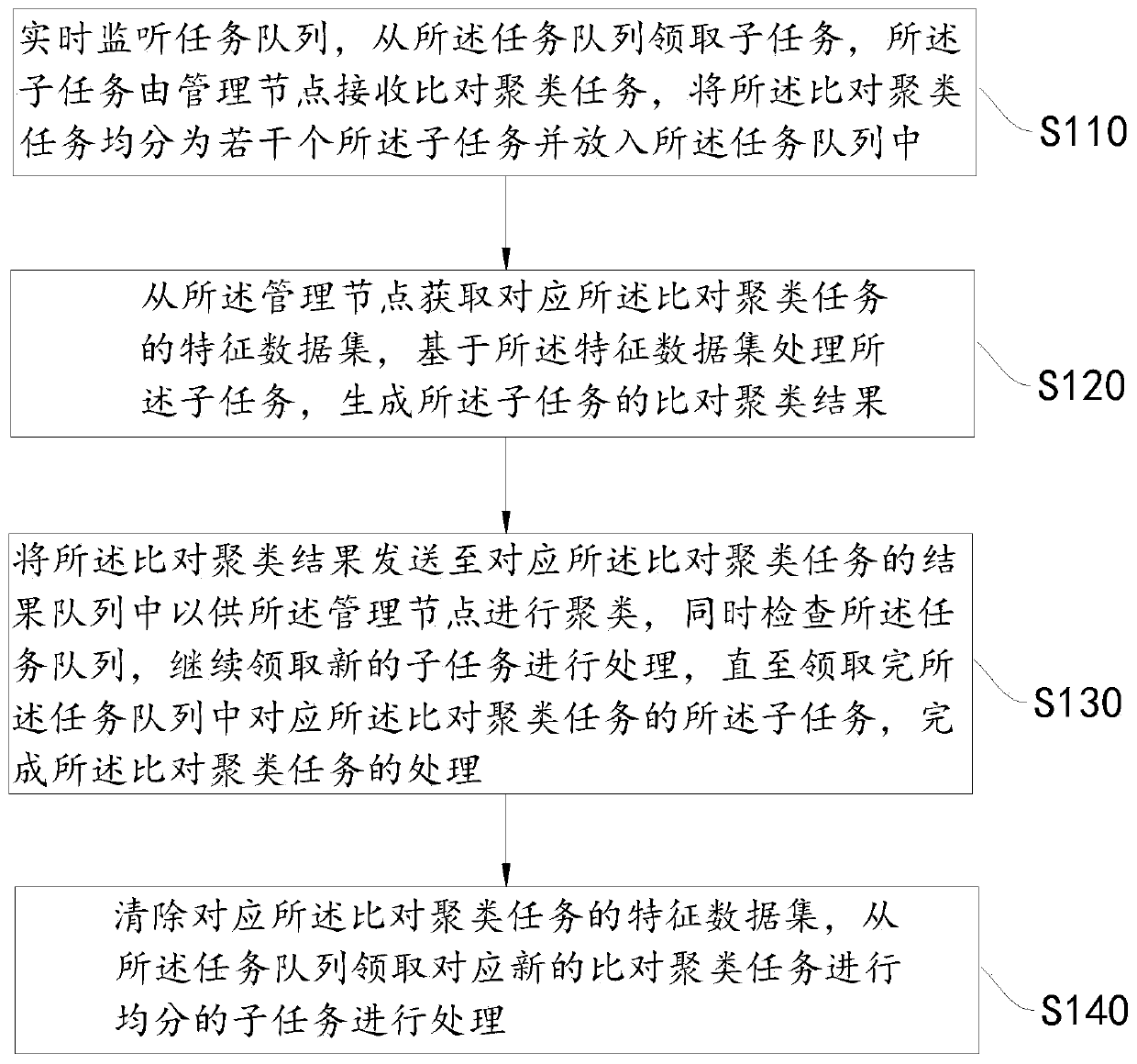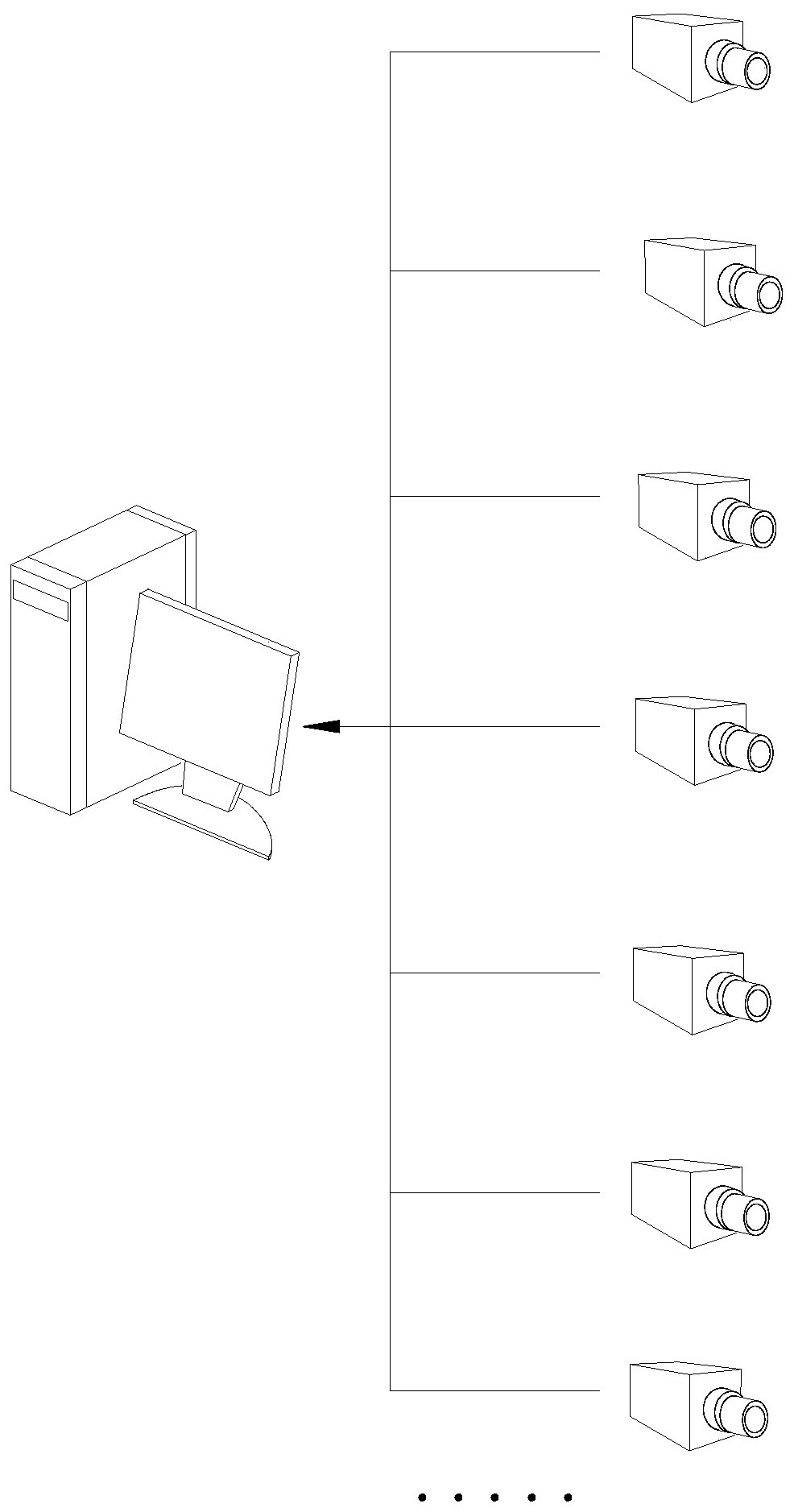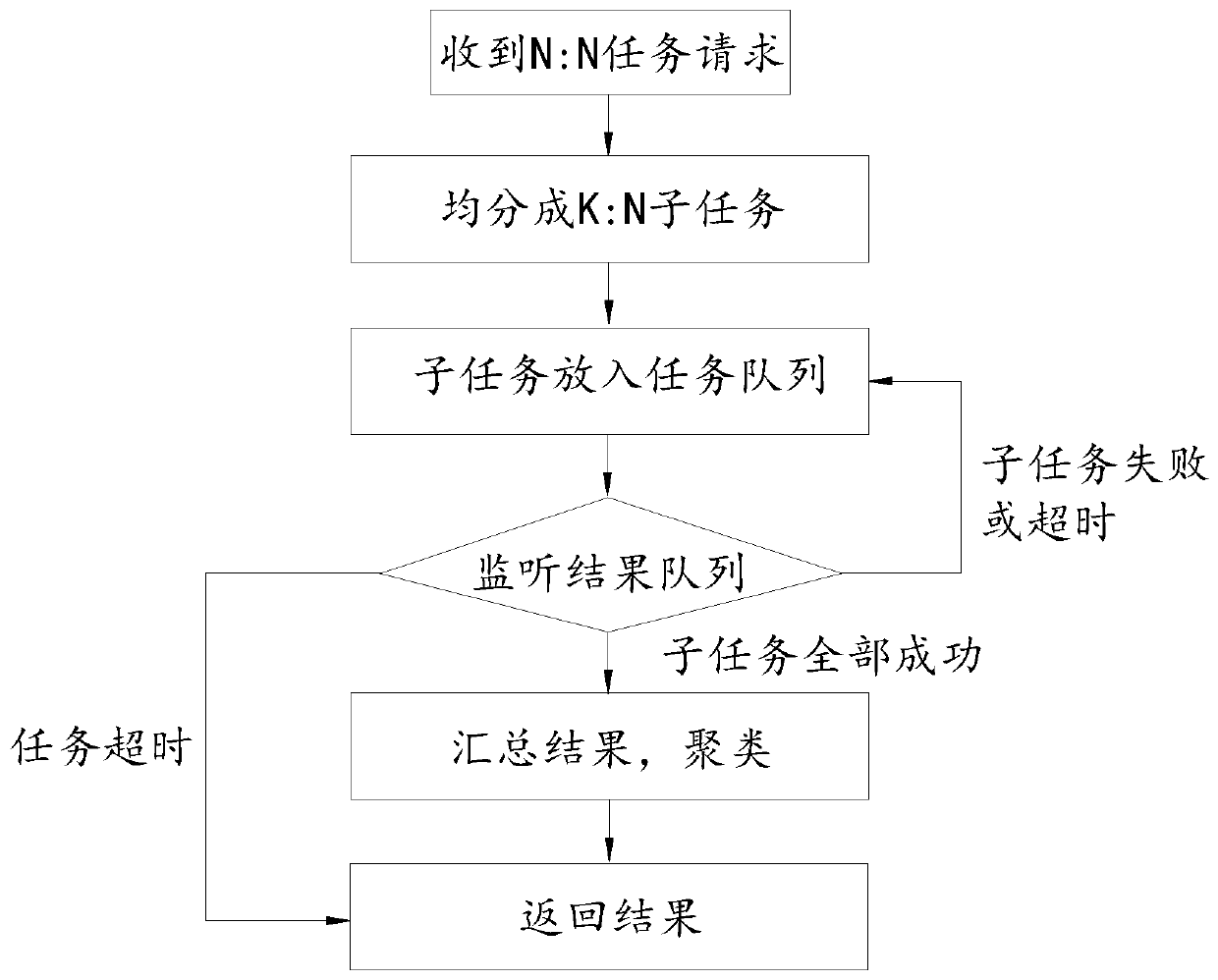Distributed comparison clustering method and device, electronic equipment and storage medium
A clustering method and distributed technology, applied in the field of data clustering, can solve the problems of low data calculation efficiency, huge amount of monitoring image data, and inability to fully utilize the computing power of each node.
- Summary
- Abstract
- Description
- Claims
- Application Information
AI Technical Summary
Problems solved by technology
Method used
Image
Examples
Embodiment 2
[0072] On the basis of the above examples, Figure 8 It is a flow chart of another distributed alignment and clustering method provided in Embodiment 2 of the present application. Correspondingly applied to the management node, refer to Figure 8 , the distributed comparison and clustering method provided in this embodiment specifically includes:
[0073] S210. Receive a comparison and clustering task, and divide the comparison and clustering task into several subtasks;
[0074] S220. Put the subtasks into a task queue for each computing node to receive and process them one by one;
[0075] S230. Obtain the comparison and clustering results corresponding to each subtask sent by each computing node from the result queue;
[0076] S240. Perform clustering on the comparison and clustering results of each of the subtasks, generate a clustering result corresponding to the comparison and clustering task, and send it back to the task requester of the comparison and clustering task...
Embodiment 3
[0080] On the basis of the above examples, Figure 9 It is a schematic structural diagram of a distributed comparison and clustering device provided in Embodiment 3 of the present application. refer to Figure 9 , the distributed comparison and clustering device provided in this embodiment specifically includes: a task receiving module 31 , a comparison and clustering module 32 and a new task processing module 33 .
[0081] Wherein, the task receiving module 31 is used to monitor the task queue in real time, receive subtasks from the task queue, and the subtasks are received by the management node for comparison and clustering tasks, and the comparison and clustering tasks are equally divided into several subtasks. The subtasks are put into the task queue; the comparison and clustering module 32 is used to obtain the characteristic data set corresponding to the comparison and clustering task from the management node, and process the subtasks based on the characteristic data s...
Embodiment 4
[0087] Embodiment 4 of the present application provides an electronic device, and the electronic device includes: a processor, a memory, and a communication module. The number of processors in the electronic device may be one or more, and the number of memories in the electronic device may be one or more. The processor, memory, and communication module of the electronic device may be connected through a bus or in other ways.
[0088] As a computer-readable storage medium, memory can be used to store software programs, computer-executable programs and modules, such as program instructions / modules corresponding to the distributed comparison and clustering method described in any embodiment of the present application (for example, distributed Comparing the task receiving module in the clustering device, comparing the clustering module and the new task processing module). The memory may mainly include a program storage area and a data storage area, wherein the program storage are...
PUM
 Login to View More
Login to View More Abstract
Description
Claims
Application Information
 Login to View More
Login to View More - R&D
- Intellectual Property
- Life Sciences
- Materials
- Tech Scout
- Unparalleled Data Quality
- Higher Quality Content
- 60% Fewer Hallucinations
Browse by: Latest US Patents, China's latest patents, Technical Efficacy Thesaurus, Application Domain, Technology Topic, Popular Technical Reports.
© 2025 PatSnap. All rights reserved.Legal|Privacy policy|Modern Slavery Act Transparency Statement|Sitemap|About US| Contact US: help@patsnap.com



